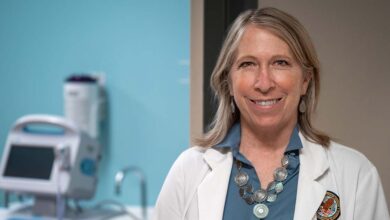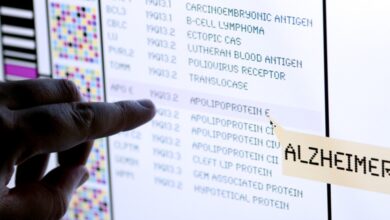OSF HealthCare calls for genAI training to create an AI-ready workforce


OSF HealthCare, a 16-hospital healthcare system based in Peoria, Illinois, has instituted mandatory education for all 24,000 employees, and has taken a deliberate strategy to ensure everyone — from custodians to executives — is aware of the power of AI.
PROBLEM
Adopting generative AI as quickly as possible is critical for OSF HealthCare. Like all nonprofit health systems nationwide, it operates on razor-thin operating margins with workforce shortages expected to persist for at least the next decade. Additionally, clinicians are still recovering from COVID-19 and facing burnout due to increased administrative burdens.
“We need to look for every opportunity to improve efficiency, productivity, and work smarter with the resources we have,” said Melissa Knuth, vice president of planning at OSF HealthCare. “We’ve all read about the incredible promise of generative AI in transforming healthcare, but actually getting to that future state is a challenge. We need the power of the entire workforce on the same side of the rock to reap the rewards.”
“While we understand that our generative AI education needs to be mandatory across the healthcare system, we also understand that people have shorter attention spans,” she continued. “Traditional education methods won’t work in this case. We have knowledge base differences across the workforce, and we need to provide education for everyone from porters and caregivers to surgeons.”
The health system also has a very tight timeline to complete the education program – about six weeks, given the popularity and availability of generative AI tools on the market.
“We know people in our workforce are using these tools both personally and at work,” she said. “We need to make sure they understand the organizational rules around using AI tools at OSF HealthCare. We want to educate them about the potential benefits and potential pitfalls to avoid.
“To overcome the challenge at hand, we learned from social media how to capture people’s attention and hold it for short periods of time (1-2 minutes) to deliver our key message,” she continued. “We use mixed media to keep the content interesting, and we use generative AI tools to assist in content creation.”
PROPOSE
OSF HealthCare knew the first lessons needed to focus on establishing a foundation of AI literacy across the entire organization, so they created a “Learning Generative AI” course to increase everyone’s understanding of generative AI. The organization needed to get everyone on the same page, but make it fun and engaging, as this would be mandatory education for the entire workforce, Knuth said.
“In order to stay true to the guidelines we laid out and our vision for this education, we created segmented content,” she explains. “If any of you were reformed programmers in your past lives, it’s a similar concept to creating containers of code that can be assembled to create one or more programs.
“We created content components that were a subset of the whole, but we needed something to bring them together in a cohesive way – like scaffolding to give it structure,” she adds. “We used Articulate Rise software to do this. Our components included interactive elements, images, videos, and text content to create the flow, much of which was generated using generative AI tools.”
It is important to create engaging content that can capture the attention of an increasingly distracted audience with a short attention span. The health system also makes it clear that OSF HealthCare is committed to innovation, which requires continuous learning for all employees.
“OSF’s vision is to harness the power of generative AI to accelerate discovery, use, and adoption to optimize healthcare delivery, empower healthcare professionals, and improve the patient experience across our health system,” Knuth stated.
After sharing the vision, she noted, key messages included:
- As you start using these tools, remember that they aren’t perfect – it’s important to validate the results you get.
- These tools can provide false and misleading information, leaving users unable to discern the value of the information they receive.
- If you are using these tools in the course of your work at OSF, never copy and paste protected patient information into a generative AI tool that has not been approved for that purpose.
Facing the Challenge
OSF has developed an education strategy tailored to the individual needs of all 24,000 employees. One version is aimed at leaders and suppliers, and the organization has created another version for all other roles.
“This allows us to tailor the message and education level to both groups,” Knuth explains. “We roll out the first wave of mandatory education across the workforce in January/February 2024, along with a short survey that allows us to understand the impact of education.
“We have an internally designed platform called Corporate University that hosts modules that can be completed in about 15 minutes,” she continues. “This platform is not connected to Epic but is available on the employee portal on the OSF website. All employees receive email notifications of required training and follow-up emails if the training is not completed by the deadline.”
The content includes short quizzes to ensure understanding.
RESULT
Shana Freehill, DNP, RN, director of education and professional development at OSF HealthCare, said that 78.75% of all OSF employees have completed the required education program, 74% of those learners said the program increased their subject matter knowledge, and 65% said the learning activity provided content relevant to their role.
“When you consider there are 24,000 employees, a 78.75 percent completion rate is high,” she noted. “Seventy-four percent said the content improved their knowledge of the subject matter and 65 percent believed the content was relevant to their role, demonstrating strong, well-developed education.
“It takes creativity to develop meaningful education for such a broad group of learners when we take into account clinical and non-clinical roles and different areas of work across the department,” she added.
ADVICE FOR OTHERS
According to Harvard Business Review, ChatGPT is one of the most widely adopted and rapidly growing products in history. It had 100 million users just two months after its launch. It took Instagram two and a half years to get that many users. It took Facebook four and a half years.
The faster technology spreads, the less time users have to learn from each other and imitate usage patterns, so it’s important that everyone knows the expectations, guidelines, and has a basic understanding, Knuth says.
“Also, realize that you will need to train continuously because the most advanced AI tools will change and may have new features and new use cases, so realize that this is something to consider and be prepared by starting new training as needed,” she advises.
“As we do with any educational effort – understand your audience and where they are starting from on the topic,” she continues. “Look at how people typically seek out and consume information today and try to understand why that works, why it works. Consider those key points when designing your education – both in terms of approach and content.”
Generative AI is an exciting and fascinating topic, she added.
“The educational approach and content should be creative, different, and feel fresh,” she recommends. “Use generative AI tools to create content, and make sure learners understand which parts of the educational module were created using generative AI tools – videos, images, key messages, etc. Transparency is a key sign of ethical use of generative AI, so it should be included in your training content.
“At OSF HealthCare, we’ve also created a tool called Prompt Buddy – a free app that will also be available in Microsoft Teams, which most employees use every day,” she concludes. “This is our way of crowdsourcing some of the best prompts that we think are helpful so employees can learn from each other about what works. We’ll likely be able to provide best practices and contributions for Prompt Buddy in future training.”
Follow Bill’s HIT coverage on LinkedIn: Bill Siwicki
Email him: [email protected]
Healthcare IT News is a publication of HIMSS Media.
The HIMSS Healthcare AI Forum is scheduled for September 5-6 in Boston. Learn more and register.




